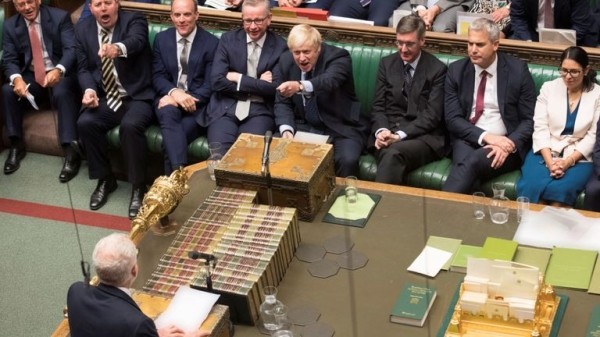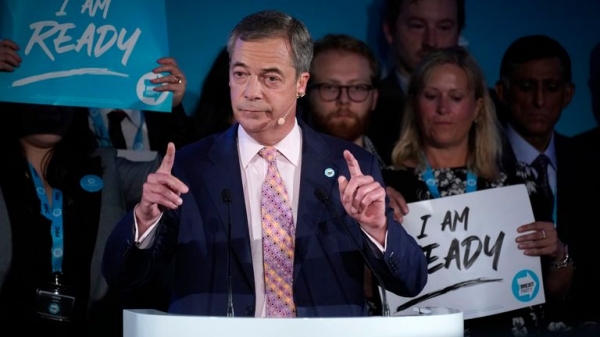The two main political parties find themselves struggling to manage internal divisions and the erosion of their vote.

The Conservative and Labour parties remain divided over Brexit, with some of their MPs switching to the Liberal Democrats or becoming independents.
Support for the two main parties has eroded as the Brexit Party and Lib Dems peel off voters on either side of the Leave-Remain divide.
As the Tory conference gets under way in Manchester, Sky News election analyst Will Jennings, who is professor of political science and public policy at the University of Southampton, looks at how perceptions of disunity have been rising for both the Conservatives and Labour since the 2017 general election.
It is conventional wisdom in politics that voters do not look kindly on divided parties.
Internal discord, acrimony, and infighting can signal to the electorate that a party lacks a coherent position on key issues or simply is disinterested in what voters think.
The deep and bitter divides afflicting the Conservatives and Labour today mark the resurgence of longstanding tensions in both of the parties – tensions that are not lost on voters.

In the early 1980s, Labour’s divides between its ideological wings were highlighted by the breakaway of a group of four former ministers to form the SDP – as a result of dissatisfaction with the leftward drift of the party under Michael Foot.
In June 1981, six months after the founding of the SDP, almost nine in 10 voters viewed the Labour Party as divided.
Throughout the 1990s, the Conservative Party’s deep splits on Europe left a lasting impression on public opinion – most memorably through the parliamentary rebellions over the Maastricht Treaty and Prime Minister John Major’s unguarded description of Eurosceptics in cabinet as “b*******”.
The percentage of people saying the party was divided reached 90% in July 1995.
In each case, division left voters with the impression that the party was ineffective, incompetent, and ideologically extreme.
There is substantial evidence that internal division comes at electoral cost.
For the last 60 years, pollsters have regularly asked the public: “Do you think the Conservative/Labour party is divided or united?”
Public opinion on this question varies a lot – and responds meaningfully to political events.
Labour’s divisions over the original referendum on EU membership in June 1975 coincided with a low point in the percentage of people who viewed it as united, as did infighting between Blair and Brown factions during the later New Labour years.

Up until the 1990s, the Conservatives were seen overall as a more united party than Labour – but the outbreak of hostilities over the issue of Europe led to a collapse in their public reputation for unity.
While this was gradually rebuilt – in particular under David Cameron – it was shattered once again over Europe by Brexit, with just 3% of people saying the party was united in July 2018 (the last time the question was asked by YouGov).
As shown below, there is a clear pattern whereby parties tend to do better in the polls when they are seen as united, and worse when they are seen as divided.


Parties know this too: Theresa May’s pollster, James Johnson, showed a version of this graph to the previous cabinet, observing. “Division hurts – this is brand damage that extends beyond a leader.”
So voters recognise divided parties and seemingly punish them, but it is a little more complicated than that.
Parties are often divided for a reason, whether that is related to weak leadership or internal ideological conflicts, which would anyway hit their support.
It is also possible that unpopularity with the electorate might sometimes itself be the cause of infighting within a party over the direction it is headed.
When parties are faced with realigning issues – like Brexit – that cross-cut their electorate, their choice can be invidious – requiring them to take positions that inevitably alienate one group or another.
Recent surveys by the British Election Study reveal that perceptions of disunity have been rising for both the Conservatives and Labour since the 2017 general election.

It is no wonder that Britain’s party system is fragmenting under such strain, with support for the parties eroded as the Brexit Party and Liberal Democrats peel off voters on either side of the Leave-Remain divide.
The two parties that have dominated British politics for over 70 years find themselves struggling to manage internal divisions and the crumbling of their vote.
Whether they can find a way to regroup and unite will shape the outcome of the coming general election and politics in the years ahead.
Next article
Impeachment inquiry could backfire on the Democrats
